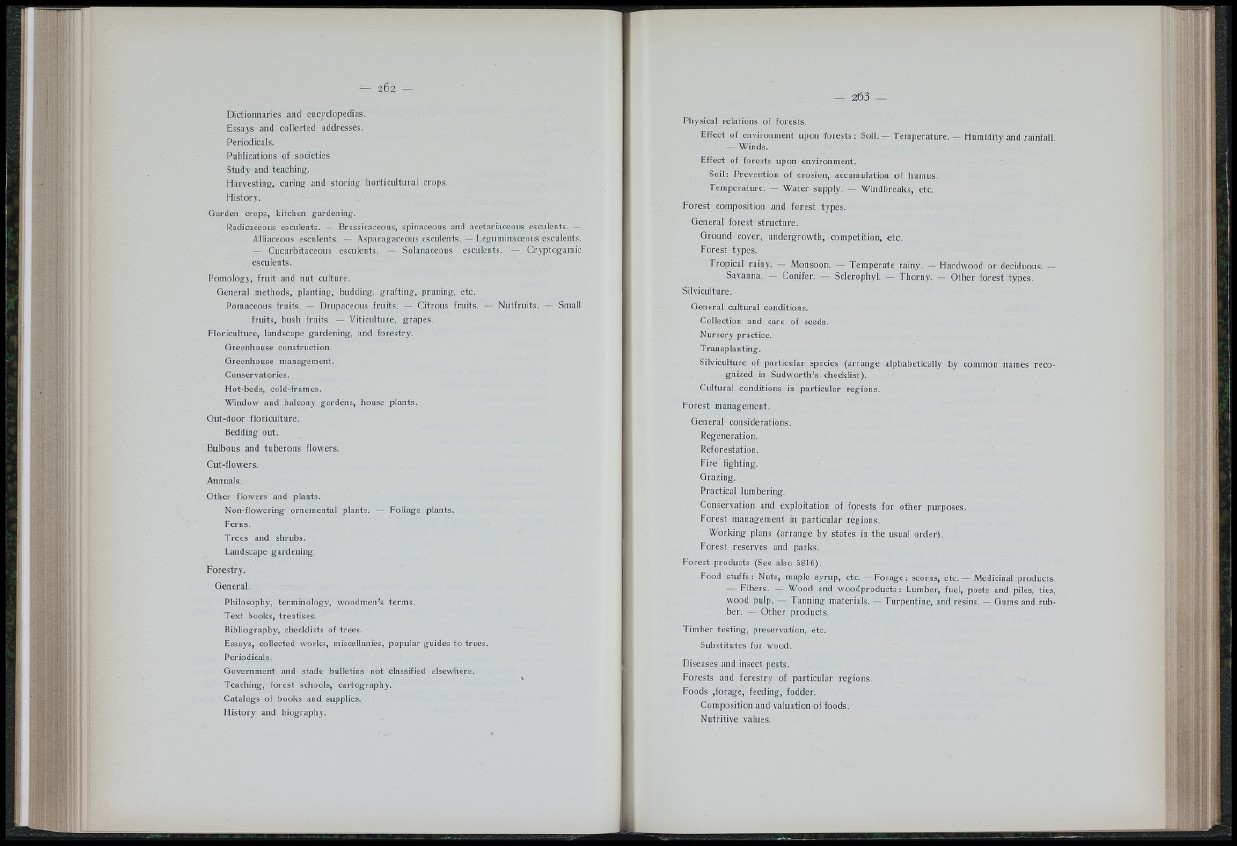
■ r ■ ¡
k. I 'i
■f:
!■
I '■
; i/
Dictionnaries and encyclopedias.
Essays and collected addresses.
Periodicals.
Publications of societies
Study and teaching.
Harvesting, curing and storing horticultural crops.
History.
Garden crops, kitchen gardening.
Radicaceous esculents. — Brassicaceous, spinaceous and acetariaceous esculents. —
Alliaceous esculents. — Asparagaceous esculents. — Leguminaceous esculents,
Cucurbitaceous esculents. — Solanaceous esculents. — Crj/ptogamic
esculents.
Pomology, fruit and nut culture.
General methods, planting, budding, grafting, pruning, etc.
Pomaceous fruits. — Drupaceous fruits. — Citrous fruits. — Nutfruits. — Small
fruits, bush fruits. — Viticulture, grapes.
Floriculture, landscape gardening, and forestry.
Greenhouse construction.
Greenhouse management.
Conservatories.
Hot-beds, cold-frames.
Window and balcony gardens, house plants.
Gut-door floriculture.
Bedding out.
Bulbous and tuberous flowers.
Cut-flowers.
ATinuals.
Gther flowers and plants.
Non-flowering ornemental plants. — Foliage plants.
Ferns.
Trees and shrubs.
Landscape gardening.
Forestry.
General.
Philosophy, terminology, woodmen’s terms.
Text books, treatises.
Bibliography, checklists of trees.
Essays, collected works, miscellanies, popular guides to trees.
Periodicals.
Government and stade bulletins not classified elsewhere.
V
Teaching, forest schools, cartography.
Catalogs of books and supplies.
His to r y and biography.
I:.,I ,
Physical relations of forests.
Effect of environment upon forests : Soil. ^ Temperature. — Humidity and rainfall.
— Winds.
Effect of forests upon environment.
Soil: Prevention of erosion, accumulation of humus.
Temperature. — Water supply. — Windbreaks, etc.
Forest composition and forest types.
General forest structure.
Ground cover, undergrowth, competition, etc.
Forest types.
Tropical rainy. — Monsoon. — Temperate rainy. — Hardwood or deciduous. —
Savanna. — Conifer. — Sclerophyl. — Thorny. — Gther forest types.
Silviculture.
General cultural conditions.
Collection and care of seeds.
Nursery practice.
Transplanting.
Silviculture of particular species (arrange alphabetically by common names re cognized
in Sudworth’s checklist).
Cultural conditions in particular regions.
Forest management.
General considerations.
Regeneration.
Reforestation.
Fire fighting.
Grazing.
Practical lumbering.
Conservation and exploitation of forests for other purposes.
Forest management in particular regions.
Working plans (arrange by states in the usual order).
Forest reserves and parks.
Forest products (See also 5816).
Food stuffs: Nuts, maple syrup, e t c .— Forage : scorns, etc. — Medicinal products.
— Fibers. — Wood and woodproducts : Lumber, fuel, posts and piles, ties,
wood pulp. — Tanning materials. — Turpentine, and resins. — Gums and rubber.
— Gther products.
Timber testing, preservation, etc.
Substitutes for wood.
Diseases and insect pests.
Forests and ferestry of particular regions.
Foods ,forage, feeding, fodder.
Composition and valuation of foods.
Nutritive values.
k':!: ^
AG'
'
T' fe
. k'
r'